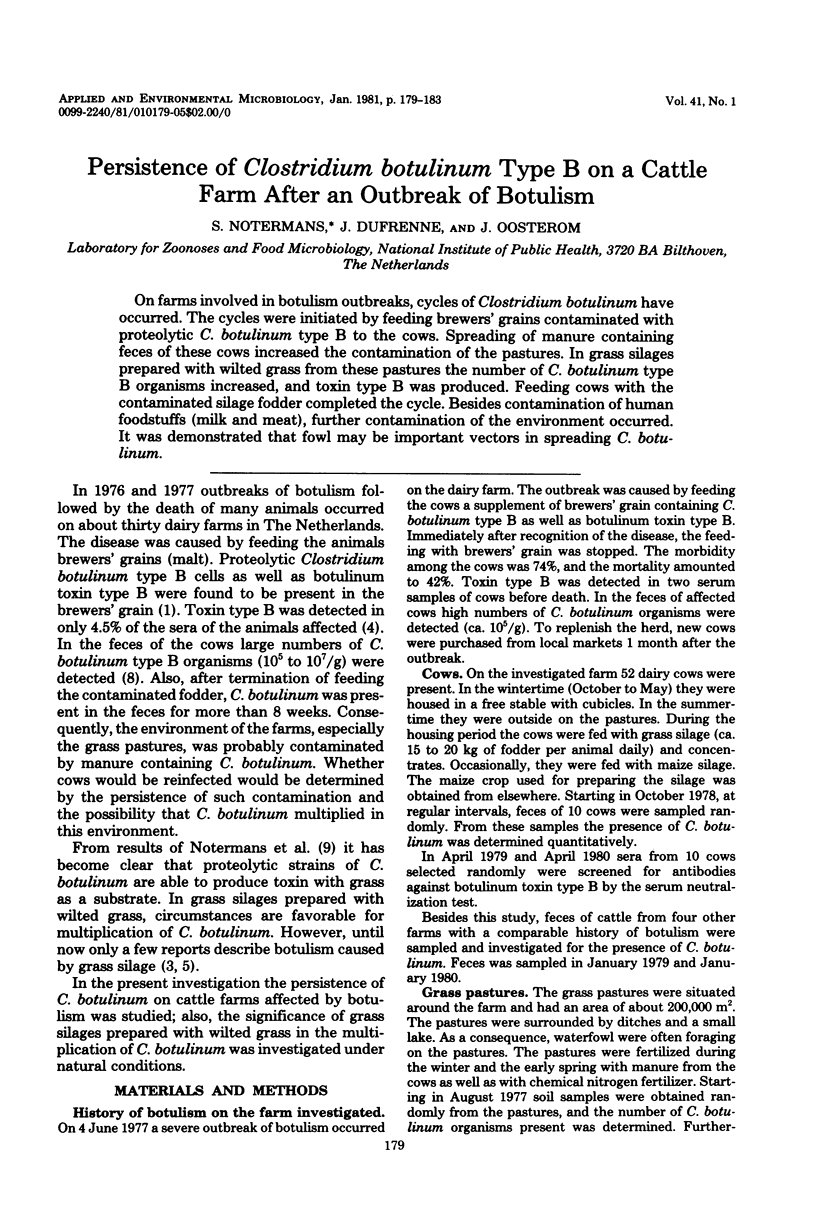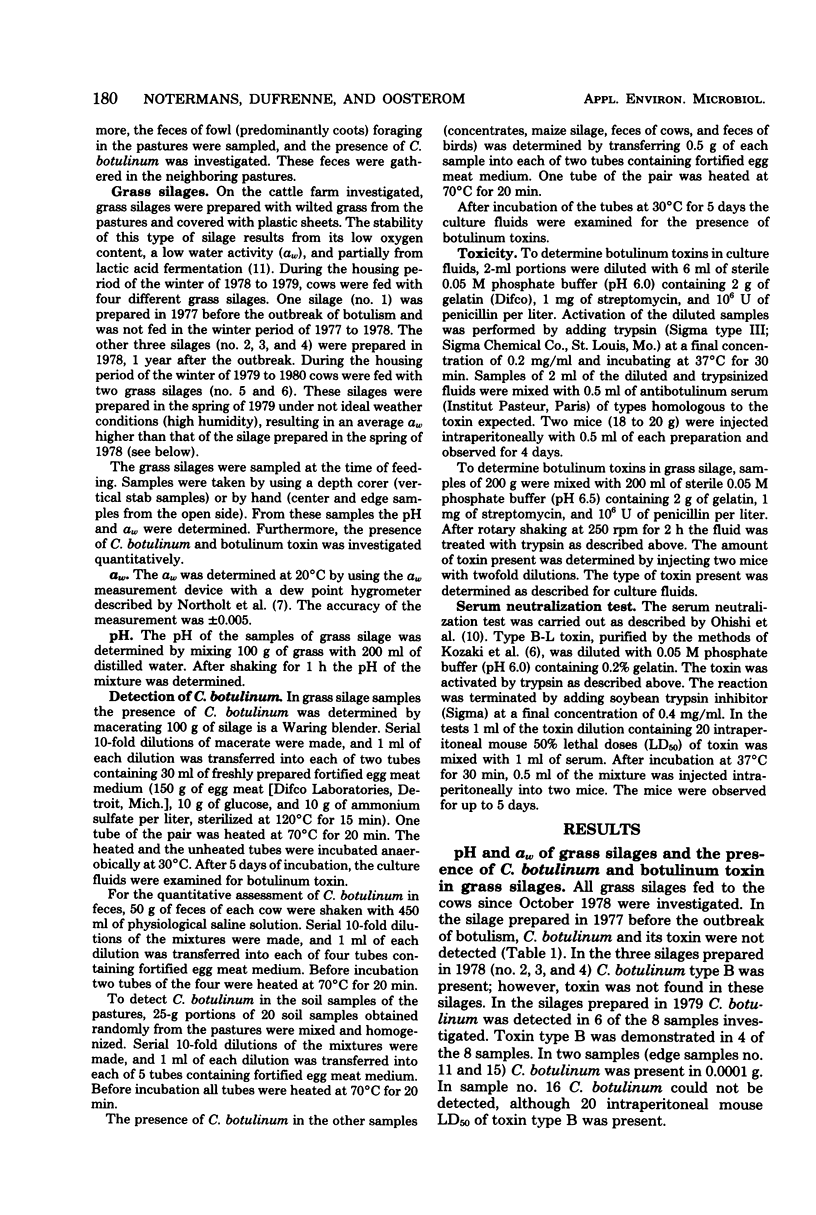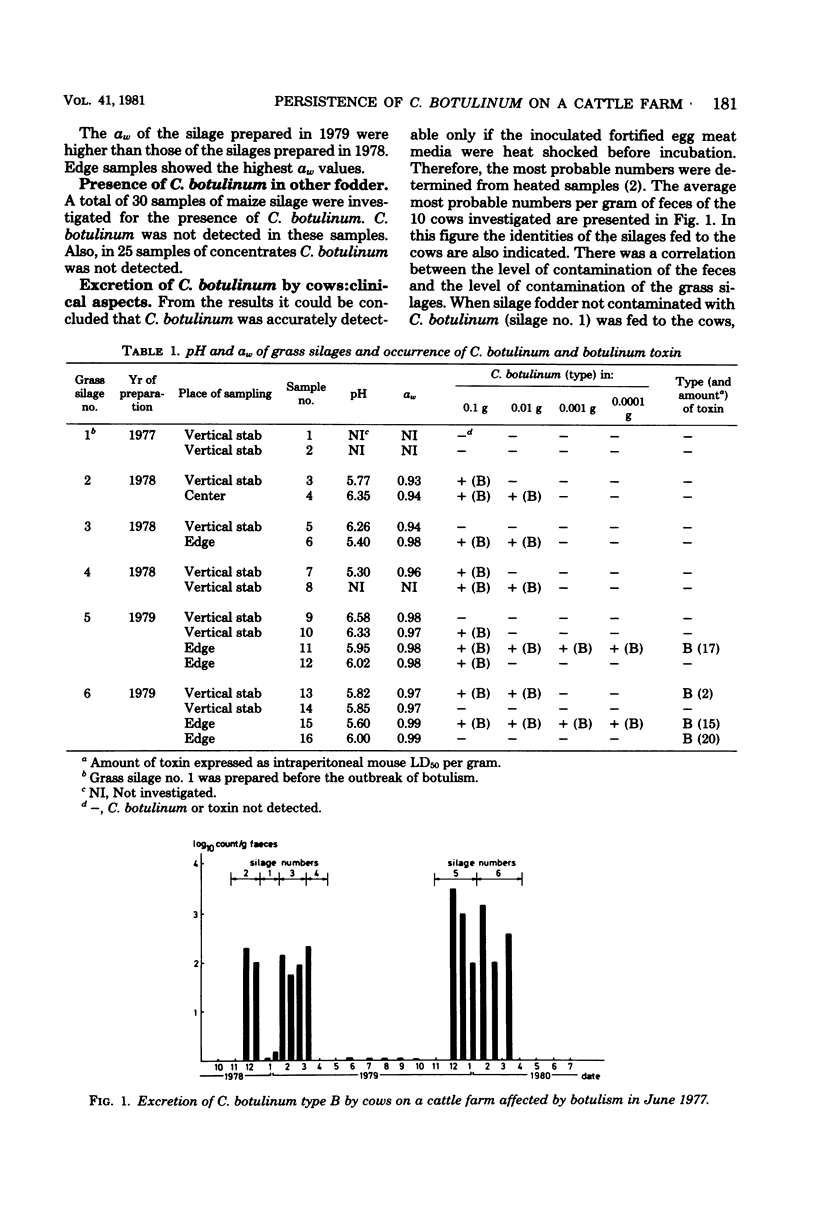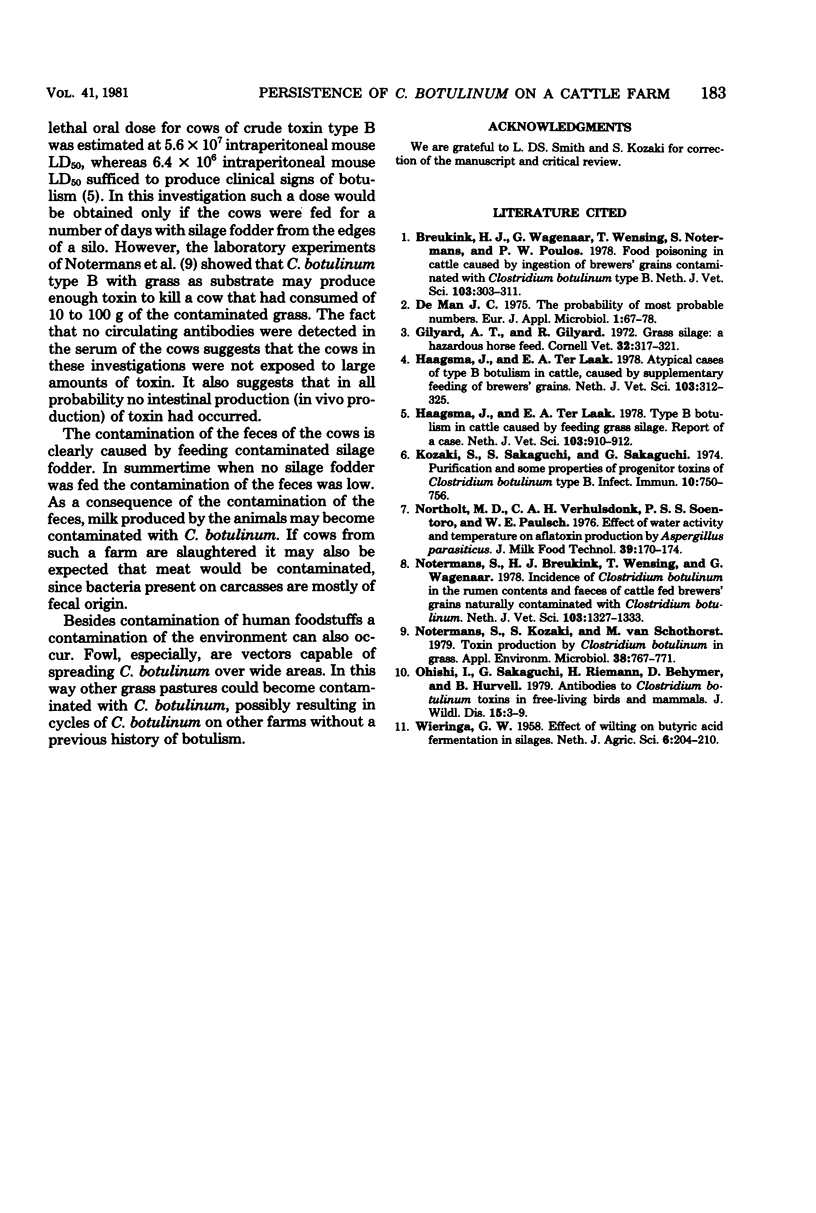Abstract
On farms involved in botulism outbreaks, cycles of Clostridium botulinum have occurred. The cycles were initiated by feeding brewers' grains contaminated with proteolytic C. botulinum type B to the cows. Spreading of manure containing feces of these cows increased the contamination of the pastures. In grass silages prepared with wilted grass from these pastures the number of C. botulinum type B organisms increased, and toxin type B was produced. Feeding cows with the contaminated silage fodder completed the cycle. Besides contamination of human foodstuffs (milk and meat), further contamination of the environment occurred. It was demonstrated that fowl may be important vectors in spreading C. botulinum.
Full text
PDF




Selected References
These references are in PubMed. This may not be the complete list of references from this article.
- Breukink H. J., Wagenaar G., Wensing T., Notermans S., Poulos P. W. Voedselvergiftiging bij runderen veroorzaakt door het eten van bierbostel besmet met Clostridium botulinum type B. Tijdschr Diergeneeskd. 1978 Mar 15;103(6):303–311. [PubMed] [Google Scholar]
- Kozaki S., Sakaguchi S., Sakaguchi G. Purification and some properties of progenitor toxins of Clostridium botulinum type B. Infect Immun. 1974 Oct;10(4):750–756. doi: 10.1128/iai.10.4.750-756.1974. [DOI] [PMC free article] [PubMed] [Google Scholar]
- Notermans S., Breukink H. J., Wensing T., Wagenaar G. Voorkomen van Clostridium botulinum in pensinhoud en faeces van runderen gevoederd met bostel welke natuurlijk besmet was met Clostridium botulinum. Tijdschr Diergeneeskd. 1978 Dec 15;103(24):1327–1333. [PubMed] [Google Scholar]
- Notermans S., Kozaki S., van Schothorst M. Toxin production by Clostridium botulinum in grass. Appl Environ Microbiol. 1979 Nov;38(5):767–771. doi: 10.1128/aem.38.5.767-771.1979. [DOI] [PMC free article] [PubMed] [Google Scholar]
- Ohishi I., Sakaguchi G., Riemann H., Behymer D., Hurvell B. Antibodies to Clostridium botulinum toxins in free-living birds and mammals. J Wildl Dis. 1979 Jan;15(1):3–9. doi: 10.7589/0090-3558-15.1.3. [DOI] [PubMed] [Google Scholar]


